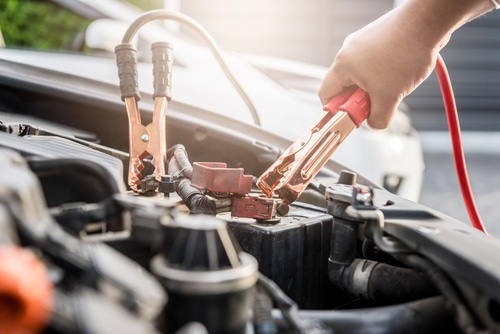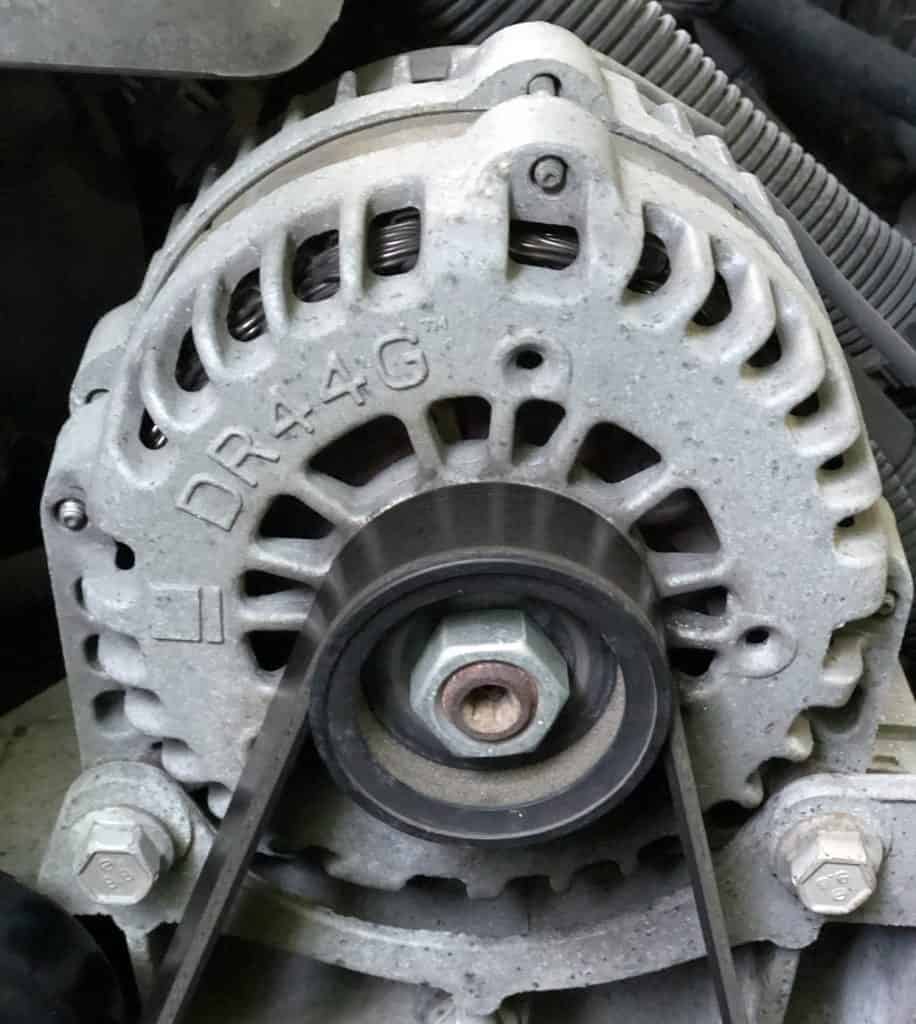Answer:
Yes, you 100% can jump a car with a bad alternator. The battery in the car with the bad alternator will charge from the alternator in the car or truck that’s jumping you.
The thing is, as soon as you disconnect the jumper cables, your car will only run until it runs the battery down, which can take no time at all, and is why driving with a bad alternator will eventually leave you stranded.
That should be enough to answer the question. Below, we’ve got tips on how to properly jump a car and how to tell if it’s really the alternator that’s bad. Thanks for stopping by.
How to Jump a Car

Jump-starting a car is a useful skill to have in case your vehicle’s battery dies. Here’s a step-by-step guide to safely jump-start your car:
- Prepare Both Cars: Position the working car close to the one that needs a jump start, ensuring they don’t touch. Turn off both vehicles and remove the keys from the ignition.
- Open the Hoods: Locate the batteries and their terminals. Identify the positive (+) and negative (-) terminals.
- Connect the Jumper Cables: Take the red jumper cable and attach one clamp to the positive (+) terminal of the dead battery. Connect the other red clamp to the positive (+) terminal of the good battery. Next, connect one black clamp to the negative (-) terminal of the good battery. Finally, attach the other black clamp to an unpainted metal surface on the car with the dead battery, away from the battery itself, to serve as a ground.
- Start the Working Car: Turn on the engine of the working car and let it run for a few minutes. This allows the dead battery to charge.
- Attempt to Start Your Car: Try starting the car with the dead battery. If it doesn’t start right away, wait a few more minutes and try again. Sometimes it takes a little time for the battery to charge enough to start the engine.
- Disconnect the Cables: Once your car starts, disconnect the jumper cables in the reverse order you connected them. Remove the black clamp from the ground first, then from the negative terminal of the good battery, followed by the red clamp from the positive terminal of the good battery, and finally the red clamp from your car.
- Let Your Car Run: Keep your car running for at least 15-20 minutes to allow the alternator to charge the battery (that’s usually more than enough time). It might be a good idea to take a short drive to ensure the battery gets enough charge.
Safety Tips:
- Always use quality, undamaged jumper cables.
- Never let the clamps touch each other when they are connected to a battery.
- If you’re unsure about the process or if your vehicle has specific instructions (especially hybrid or electric cars), consult your owner’s manual or seek professional assistance.
By following these steps, you can safely jump-start your car and get back on the road.
How to Tell if an Alternator Is Bad

To diagnose whether the issue with your car is due to a bad alternator or a failing battery, you can use a multimeter, a handy tool for checking electrical voltages. Here’s how to do it:
- Set Up Your Multimeter: First, make sure your multimeter is set to measure voltage. You’ll want it on the 20V DC setting for most car batteries.
- Test the Battery:
- Ensure the car is off. Connect the multimeter’s red probe to the battery’s positive (+) terminal and the black probe to the negative (-) terminal.
- A healthy battery should show around 12.6 volts. If you see a reading significantly lower than 12.4 volts, your battery may be undercharged or bad.
- Test the Alternator:
- Start the car (ensure all accessories and lights are off to get an accurate reading). With the engine running, keep the multimeter connected as before.
- A functioning alternator will produce about 13.8 to 14.5 volts. If the voltage reading is below 13 volts or significantly above 15 volts, there might be an issue with the alternator.
- Load Test:
- With the engine still running, turn on your headlights, AC, and any other electrical components. Watch the multimeter’s reading.
- If the voltage drops below 13 volts when these components are on, it suggests the alternator may not be providing enough power to charge the battery under load.
Safety Tips:
- Ensure the car is in a safe, stationary position before starting any tests.
- Avoid touching the metal parts of the probes together when they’re connected to prevent short circuits.
- Wear protective gear if necessary, and always follow your vehicle’s specific guidelines when performing electrical tests.
Note: While these tests can indicate a bad battery or alternator, they might not catch every issue. If your car still experiences problems after charging or replacing the battery, or if the alternator tests within normal limits, consider consulting a professional mechanic for a comprehensive diagnosis.
Conclusion:
I hope this article helped you get your car moving again. Good luck swapping your alternator!




